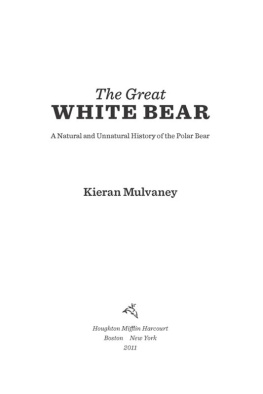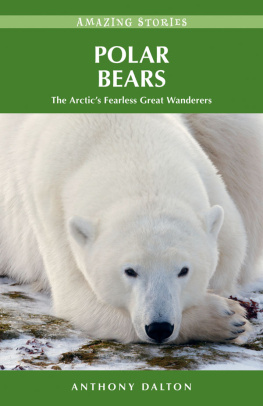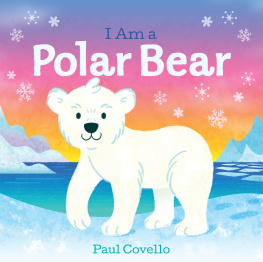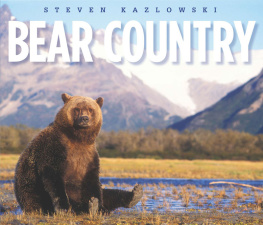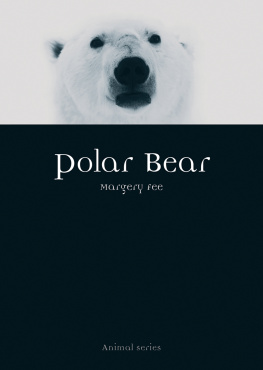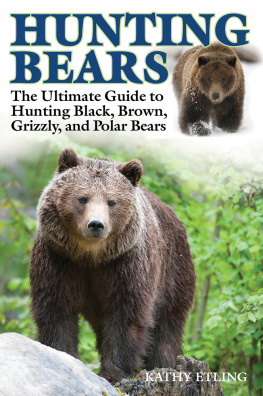Houghton Mifflin Harcourt
Boston New York
2011
Copyright 2011 by Kieran Mulvaney
All rights reserved
For information about permission to reproduce selections from this book,
write to Permissions, Houghton Mifflin Harcourt Publishing Company,
215 Park Avenue South, New York, New York 10003.
www.hmhbooks.com
Library of Congress Cataloging-in-Publication Data
Mulvaney, Kieran.
The great white bear : a natural and unnatural history
of the polar bear / Kieran Mulvaney.
p. cm.
Includes bibliographical references.
ISBN 978-0-547-15242-4
1. Polar bear. I. Title.
QL 737. C 27 M 85 2011
599.786dc22 2010017206
Book design by Melissa Gruntkosky
Printed in the United States of America
DOC 10 9 8 7 6 5 4 3 2 1
To my brothers:
Michael Mulvaney
and
Stephen Mulvaney
And to the memory of my parents:
Peter Mulvaney
(May 19, 1929October 7, 2008)
and
Wendy Mulvaney
(March 7, 1929September 10, 2010)
Contents
Acknowledgments
Journey
Becoming
Bear
Ice
Life
Encounters
Churchill
Melt
Future
Notes
Annotated Bibliography
Index
Acknowledgments
Although mine is the only name on the cover of this book, any undertaking such as this requires the help, encouragement, and support of a multitude of people.
I would like first of all to thank my agent, John Thornton of the Spieler Agency, who quietly and patiently nurtured my proposal and steered it to a good home. I could not have asked him to find a better home than Houghton Mifflin Harcourt; Lisa White immediately showed enthusiasm for, and an understanding of, the project and has been a sensitive and collaborative editor. I very much hope we shall work together on many more titles in the future.
I do not remember how I heard of Robert Buchanan, president of Polar Bears International, or what first moved me to contact him, but it is to my considerable benefit that I did. Robert is not only well connected and highly energetic; he is a genuinely kind and helpful man. It was because of him that I was able to spend time in Churchill, Manitoba, and it was through him that I encountered many of the researchers who have been so helpful in improving my understanding of polar bears. This book would not have been possible without him.
One of Robert's first acts was to put me in contact with the good folks at Frontiers North Adventures; many thanks to John Gunter, Lynda Gunter, and Heather Ross for their assistance before, during, and after my time in Churchill. My time at the Tundra Buggy Lodge and on Tundra Buggies was greatly enhanced by the company, expertise, and professionalism of David Allcorn, Bree Golden, Chris Hendrickson, Trevor Lescard, and Julie Seaton. On Buggy One, I enjoyed and benefited from the companionship and knowledge of Robert Buchanan, B. J. Kirschhoffer, Leann Myers, and Krista Wright of Polar Bears International; Don Moore of the Smithsonian National Zoo; David Shepherdson of Oregon Zoo; JoAnne Simerson of San Diego Zoo; Thomas Smith of Brigham Young University; and Geoff York of the World Wildlife Fund.
I was extremely fortunate that when searching for accommodations in Churchill, I came across a bed-and-breakfast called Duncan's Den; anyone who offers Bailey's to guests with their 6:00 a.m. coffee is all right by me, and I am pleased and honored to be able to call Lance and Irene Duncan my friends. My time with Lance and Irene was considerably enhanced by the concurrent stay of Paul Easthope and Helen Worth, for whom Churchill was one stop on a great around-the-world adventure. During the long train journey north from Winnipeg, I enjoyed enlightening and intelligent conversation with Doug Ross, and I am grateful also for those in Churchill who gladly gave of their time: Tony Bembridge and Jon Talon of Hudson Bay Helicopters; Shaun Bobier of Manitoba Conservation; Mike Spence, Churchill mayor; and Louella McPherson, Don Walkoski, and Marilyn Walkoski of Great White Bear Tours.
My research was considerably aided by those who kindly gave of their time over the phone or in person, including Steve Amstrup of the United States Geological Survey, whose monograph on polar bears made my work a hundred times easier; Robert Buchanan; Richard Harington, Canadian Museum of Nature; Steve Herrero, University of Calgary; Brendan Kelly, University of Alaska; Eric Larsen; David Lavigne, International Fund for Animal Welfare; Don Moore; JoAnne Simerson; Len Smith; Tom Smith; and Geoff York. Brendan, David, Geoff, Tom, and Bruce McKay of SeaWeb all generously agreed to read portions of the draft manuscript. I am tremendously grateful to them for doing so, although I must underline that any remaining errors are mine alone.
For providing photographs, many thanks to Robert and Carolyn Buchanan, Nick Cobbing, Brendan Kelly, and Jill Mangum.
Portions of the Churchill chapter were first published in the Washington Post Magazine; thanks to David Rowell for helping me focus my thoughts and sharpen my writing. I am fortunate to be granted a platform to write about polar bears, climate change, the Arctic, and many other environmental issues for Discovery Channel News; my considerable gratitude to Lori Cuthbert, Larry O'Hanlon, and Michael Reilly at Discovery for their support.
Much of my practical experience with the Arctic derives from the two expeditions involving the Greenpeace ship Arctic Sunrise that act as bookends to the text that follows. My participation in the first, in 1998, was as a freelance journalist, writing primarily for BBC Wildlife and New Scientist as well as Discovery News; my involvement was the brainchild of Kalee Kreider and Steve Sawyer, both then with Greenpeace and now respectively with the Office of the Honorable Al and Mrs. Tipper Gore and the Global Wind Energy Council. I am forever thankful to them for launching my life in that direction. During that first trip, I learned much about Arctic wildlife and science from the researchers on board, particularly George Divoky and Brendan Kelly of the University of Alaska; eleven years later, my connection with the Arctic Sunrise was as onshore coordinator for an expedition to the eastern Arctic, and although many researchers spent time on the ship during the three months or so that the voyage was under way, I personally came into closest contact with, and learned most from, Ruth Curry, Jim Ryder, and Fiamma Straneo of Woods Hole Oceanographic Institution; Gordon Hamilton of the University of Maine; and Leigh Stearns of the University of Kansas. Gratitude and greetings to those at Greenpeace who helped make either or both of those expeditions come together, particularly Willem Beekman, John Bowler, Melanie Duchin, Thomas Henningsen, Beth Herzfeld, Paula Huckleberry, Frank Kamp, Martin Lloyd, Sharon Mealy, Dan Ritzman, Sallie Schullinger-Krause, Adam Shore, Walt Simpson, Arne Sorensen, Dave Walsh, Pete Willcox, and the many others who worked tirelessly on board or ashore.
As I have commented in acknowledgments in earlier books, authorship is a mostly solitary and oftentimes lonely process, made palatable by the support of friends across the country and around the world. I think particularly of Rachel Charles, Melanie Duchin, Mike Harold, D. J. and Catherine LaChapelle, Stephanie Lasure, Loni Laurent, Bruce McKay, Pilar Vergara, Sam Walton, Jim Weber (who, with Jason Colosky, Terry Hansen, and Scott Hansen, manages to get me out of the house and into a nice restaurant once every couple of months or so), and especially Kennedy Clark.
I mean to imply no disrespect at all to those I have already mentionednor, I suspect, will any be inferredwhen I say that, most of all, I cherish the love of my family, to whom this book is dedicated: my brothers, Michael and Stephen; my darling mother; and my late father.
Next page
